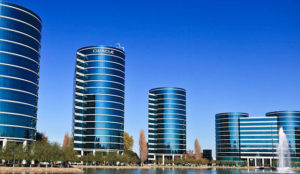So much is happening as we approach the end of Q2 — our industry’s busiest quarter, at least by some measures. I’m flying around seeing things but not always able to comment from a middle seat on a red-eye. So this piece is an attempt to catch up and set some markers for the traditionally slower summer.
I’ve been searching for a word to describe a new category I see. You can call it various things, like “on-demand services” or even “Service as a Service,” which somewhat distinguishes it from “Thing as a Service,” such as SaaS, but it’s confusing.
Here Now, Gone Tomorrow
SaaS has led the way in Things as a Service. While it’s a perfectly good descriptor, the rapid evolution of the IoT — that is, Internet of things — has introduced some confusion. Things as a Service describes any traditional goods delivered as a service, such as software or a car or a cellphone. Services delivered as services often don’t have a physical component — or that component is of a different type, perhaps not even human.
For instance, you can get Software as a Service, but the training or consulting that needs to go with it is very different. First, it’s delivered by people who show up, do a job and disappear. You don’t employ them, and you certainly don’t own them, and their work product is pure service. Often, they leave behind only thoughts in others’ minds or software code.
Another example — my favorite right now — is earthmoving. Various makers of things like excavators and bulldozers now offer Earthmoving as a Service, obviating the need to purchase a big device. The difference is that the service is intentionally and decidedly temporary.
These companies calculate the amount of earth moved (to draw a simple example) and charge by a meaningful metric, such as tons or cubic yards moved. These are short-term services; the equipment and people to run it show up one day, do a specific task, and then are gone. Or perhaps they are idle for one week per month — how do you charge for this?
In a SaaS model, you might buy a specific number of seats per month and that’s it. If your people don’t use the system, too bad. However, in the earth-moving example, an idle machine still has overhead for a vendor. How does the vendor capture revenue when the device is idle?
It’s not hard to do, but it gets into some branching logic that typical billing systems might not cover. So, very quickly, we see that a Service as a Service is different from a Thing as a Service. What do you call it? And what’s the name of the business model? And how do you account for these services?
My thoughts include words like “precision services” or “discrete services.” Each conveys a sense of the ad hoc, a temporary, specialist thing that won’t become part of the status quo in the sense that it will be gone at some point. Just think of the earthmoving equipment required to build a tall building and understand that it’s not there anymore once the building is completed.
So that’s one thing I’ve been noodling on. Send me a note with your thoughts.
Oracle’s Infrastructure Business
Also on the docket are Oracle’s results for the last quarter. It’s only important to look at the direction, which is up and to the right of the graphs, to know that the company has hit its stride on cloud computing.
I am happy for Oracle and previously have written that its model is suited uniquely to its customer base. It includes all phases of cloud computing — infrastructure, applications and platform — to support customers in various stages of the move.
Oracle’s big footprint attracts lots of competition — from Amazon’s AWS at the infrastructure end to Microsoft, Salesforce and SAP on applications and platform. I am not even sure if they all agree on what platform is, which is important. It tells us that the tip of the spear is platform and that it’s the competitive landscape. It’s also the metric that we need to use to analyze and understand the quality of any software vendor’s earnings.
Infrastructure is heading toward pure commodity status, and if it has not yet arrived there, it’s getting close. Ironically, however, you can’t be wildly successful in the other phases of the game if you don’t have a credible infrastructure offering.
So you have to look with great interest at Oracle’s infrastructure number which equals just north of US$400 million on what I believe is a $1 billion cloud base. Is it a good thing? I think it’s a necessary thing, and it might set up the company to do well in other phases. That jury is still out, though.
Who’s Afraid of AI?
Finally, I am in complete disagreement with a piece on artificial intelligence in The New York Times Sunday Review: “The Real Threat of Artificial Intelligence” by Kai-Fu Lee. I’ve seen the argument before: AI will swallow up jobs, leaving a large and unemployable group of people who will require some form of guaranteed income support. Rather than offer an opinion, let me supply an analysis and some data.
Massive income assistance never has worked well in human history. You might go all the way back to the Roman Empire and recall the idea of bread and circuses as an example of such welfare — but if you do, you also need to factor in that it didn’t work out well for guys named “Caesar.” In modern times the top earners always have objected to the confiscatory taxes needed to make such a scheme work.
This kind of analysis is too dependent on straight-line thinking. What’s missing is any sense of the dynamism of free markets in a democracy. Free markets enable innovation and entrepreneurship, and with them come new industries and new jobs.
I know things look kind of bleak for people with high school educations or even people with BAs in literature or philosophy. Still, the fact of the matter is that since the Industrial Revolution there have been five ages when an industry or a clutch of them took off and did really well for a few decades, only to fall back to earth later, killing some of the jobs it created in the name of efficiency and commoditization.
What we’re going through with AI is cyclical and not one of a kind. I just wrote a book about it, and it will be out in September — a time when we come back from the beach, put our game faces on, and rediscover that a machine really can’t do what we do.
























































